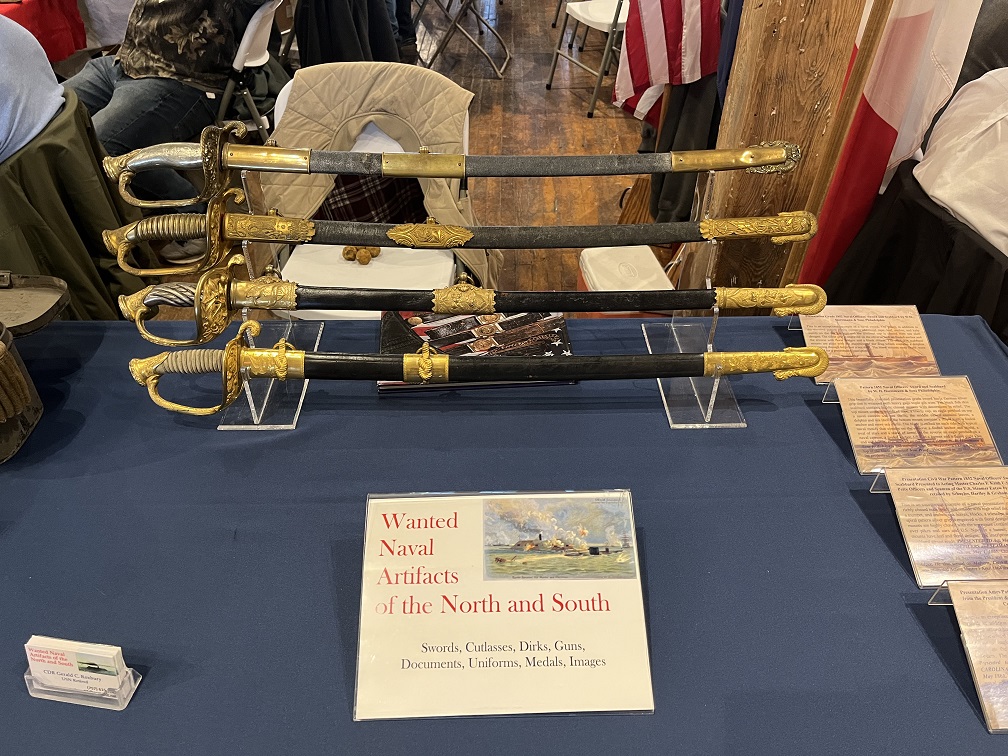
Gerald Roxburys collection By John Theo Jr.
Many people know Gerald Roxbury as the vice president of the South Boston-Halifax Museum of Fine Arts and History Board of Directors. To say Jerry is a rare historian with a wealth of knowledge is an understatement. I first met him when I donated my uncle’s World War II medals to the museum. I watched in awe as Jerry unpacked every ribbon, award, and pin and rattled off what each meant without having to look up a single item.
“This was the Philippine Liberation medal,” he said. “This was the World War II Victory Medal. This was the Asian Campaign, and this was a Good Conduct Medal….” And he went on for almost a half hour, answering all my questions.
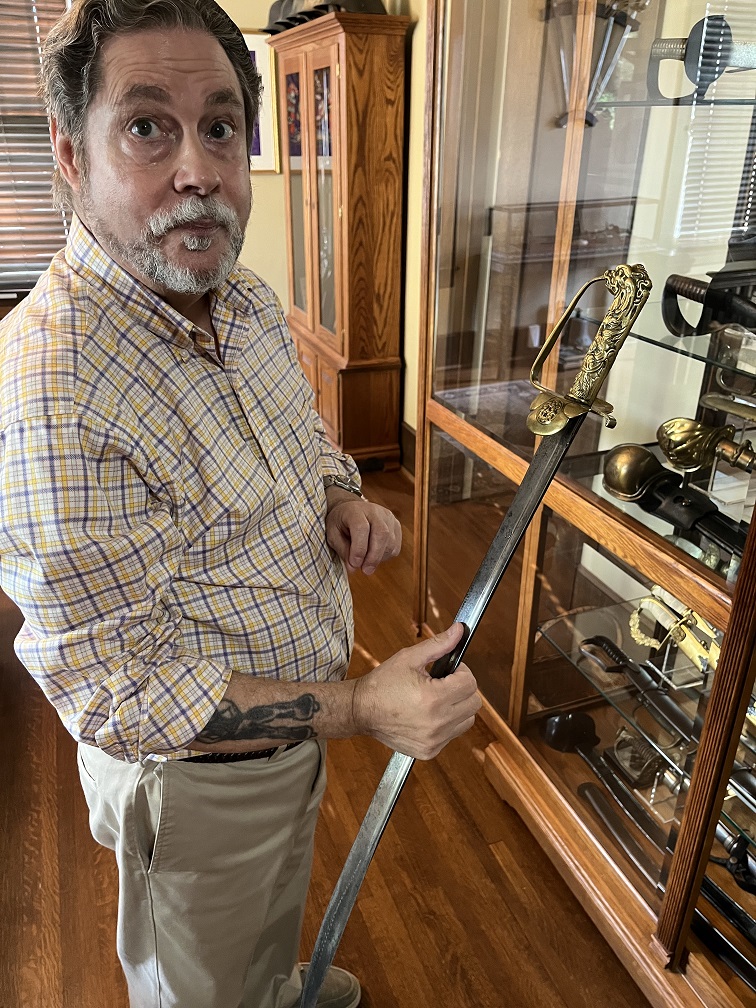
When I dug deeper into this enigma known as Jerry Roxbury, I found a multi-faceted man with a fascinating past. He’s a 45-year Navy veteran passionate about United States naval history. Furthermore, he is one of a handful of people in the world who owns a private collection of rare US naval swords from the 1800s. I was privileged to spend time with him and view his collection one afternoon.
Born in New York, Jerry comes from a long line of Navy veterans dating back to World War I. He enlisted in the Navy right out of high school and retired 35 years later as a commander. He spent another 10 years working as a government contractor for the Navy. After landing in Norfolk in 1975, Jerry and his wife Maria fell in love with southern culture and Virginia – especially its history. After his naval career ended, the Roxburys stayed in the Old Dominion and settled in Halifax County.
Jerry recalls his dad taking him to history shows and festivals throughout New York as a young boy. Combined with his family’s lineage, this helped kickstart his love of US history. Although his collection includes naval garments, hats, prints, and medals, his primary focus is his vast collection of naval swords, sabers, cutlasses, and dirks.
I felt like a little boy again talking swords with a wise sage as Jerry explained things like metallurgy, acid etching, and the complex process whereby gold and mercury were mixed to decorate the blades. The metalsmith would then heat the blade to evaporate the mercury, allowing the gold to adhere to the blade.

Most of the swords looked like works of art and were pristine. When I asked why the handles looked new on some swords, Jerry said they were made of shark skin. He showed me the difference between leather and shark skin scabbards, and said, over the past two centuries, the shark skin held up far better than bovine. All the blades are carbon steel, as stainless steel wasn’t invented until the late 1800s. The contrast between the Union and Confederate naval swords is stark. The Union swords and cutlasses were more ornate. It is clear the Confederates were in a rush, on a budget, and cared more about mass production and pragmatism than show.
During our afternoon together, I also learned that curved blades are better for cut-and-thrusting. Shorter swords were often given to enlisted men rather than officers, and it wasn’t uncommon for officers to purchase their swords and sidearms. I learned about sword components like basket handles, and that a boarding pike was a type of spear used to keep people from storming a boat from an enemy ship, but was also used offensively when boarding someone else’s. The concept of boarding during naval battles really ended with the War of 1812. By the beginning of the Civil War, times had changed. Steam replaced sail, iron replaced wood, and rifle and cannon technology increased to the point where close-quarter naval battles were becoming a thing of the past.
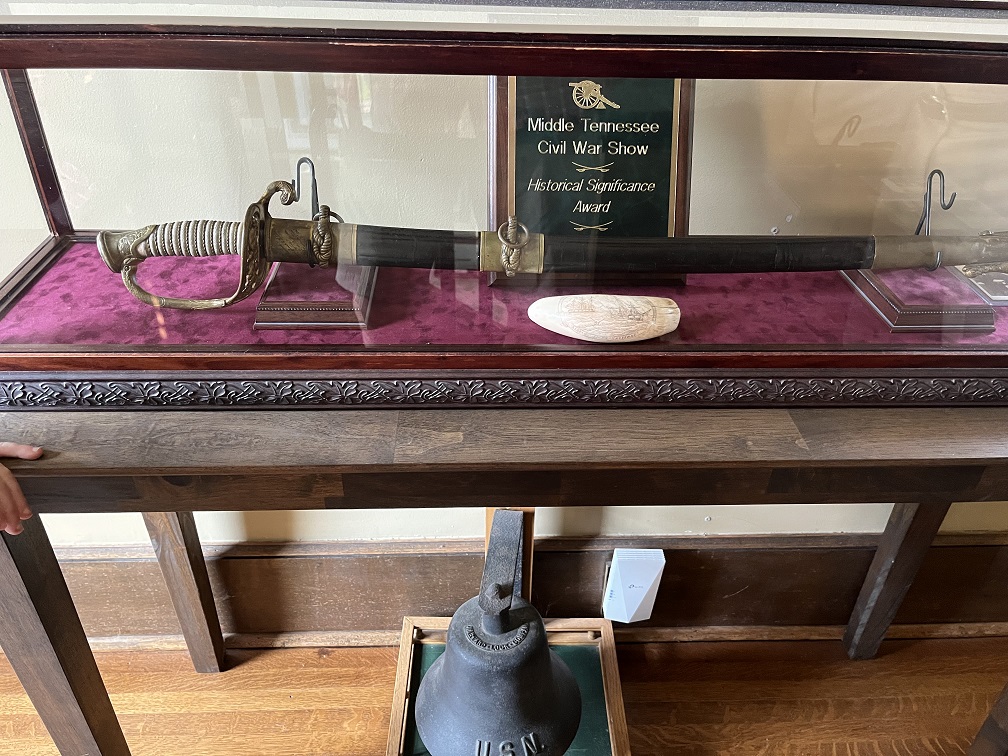
“Technology advanced quickly during the Civil War,” Jerry said. “The battle between the Monitor and Virginia ironclads made all other ships obsolete.” This was a seminal moment in nautical history. The saying goes that necessity is the mother of invention. Many times, war has produced technology that was needed for the times. This has been evident in almost every war since the founding of the United States, whether it was repeating rifles or antibiotics. As war technology increased, medical technology rushed to keep up with the new and faster ways men were killing one another.
Today, swords, cutlasses, sabers, and dirks are no longer part of the naval arsenal. Swords are still part of ceremonial dress; a formal allusion to a romantic time on the sea that never really existed. In the 17th and 18th centuries, horrific medical and sanitary conditions meant death could come from a thousand different directions. Infection, scurvy, dysentery, and malnutrition were just a few enemies without a face. Only in movies did this romantic high seas era ever truly live.
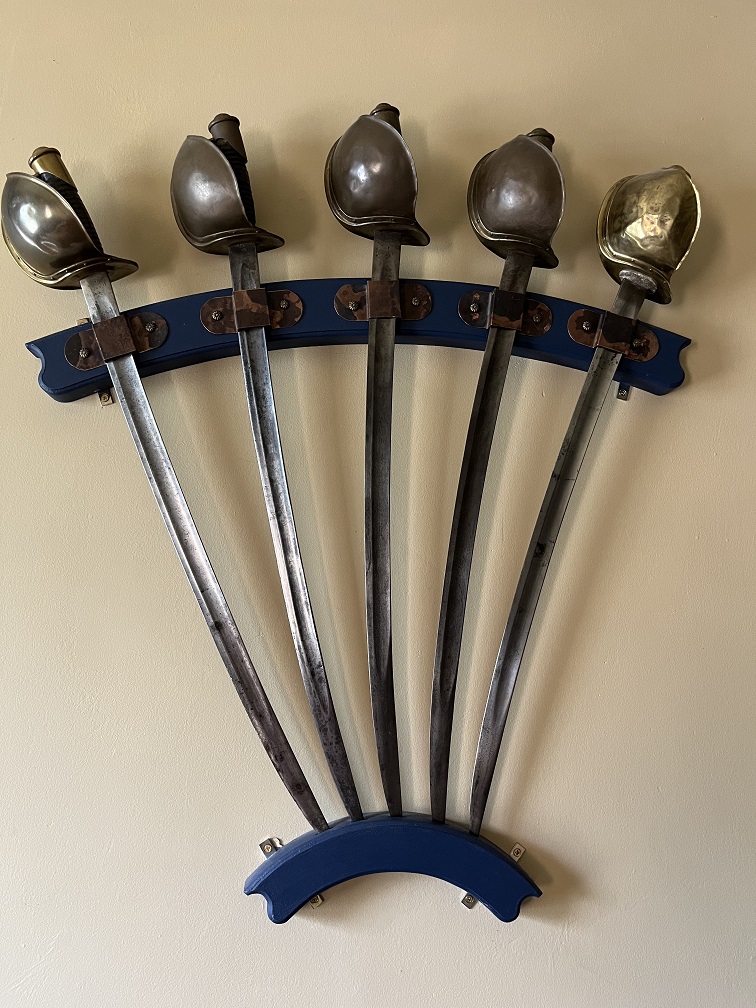
How did the naval sword’s life end? It wasn’t the way one might think. Repeating rifles, Colt revolvers, and steam locomotives made way for western expansion and new technology like the automobile, but the naval sword persevered for decades beyond the Civil War. A naval encyclopedia of 1881 mentions using the cutlass on boat expeditions. Furthermore, in 1904 The Petty Officer’s Drill Book states that landing parties should have both a “sword and a revolver.”
Eventually, the secretary of the Navy ordered the sword’s demise on Oct. 15, 1942, abolishing its use in the Navy, Coast Guard, and Marine Corps. The cutlass soon followed in 1949. However, in 1954, the sword was restored as part of the officers’ dress uniforms, and in 2010 the cutlass was approved for ceremonial wear by chief petty officers.
Today, sailors’ only blade might be a folding knife like a Spyderco or a Leatherman multi-tool. Special forces still carry fixed-blade knives. There are times when Navy Seals are in a jungle environment when they might take a parang or machete. Ironically, Navy Seals have reintroduced into their arsenals a weapon almost as ancient as swords. They now employ tomahawks and hatchets for breaching and even some hand-to-hand combat. With all the high-tech weaponry in 2023, blade fighting, however rare, is still possible in the Navy Special Forces.
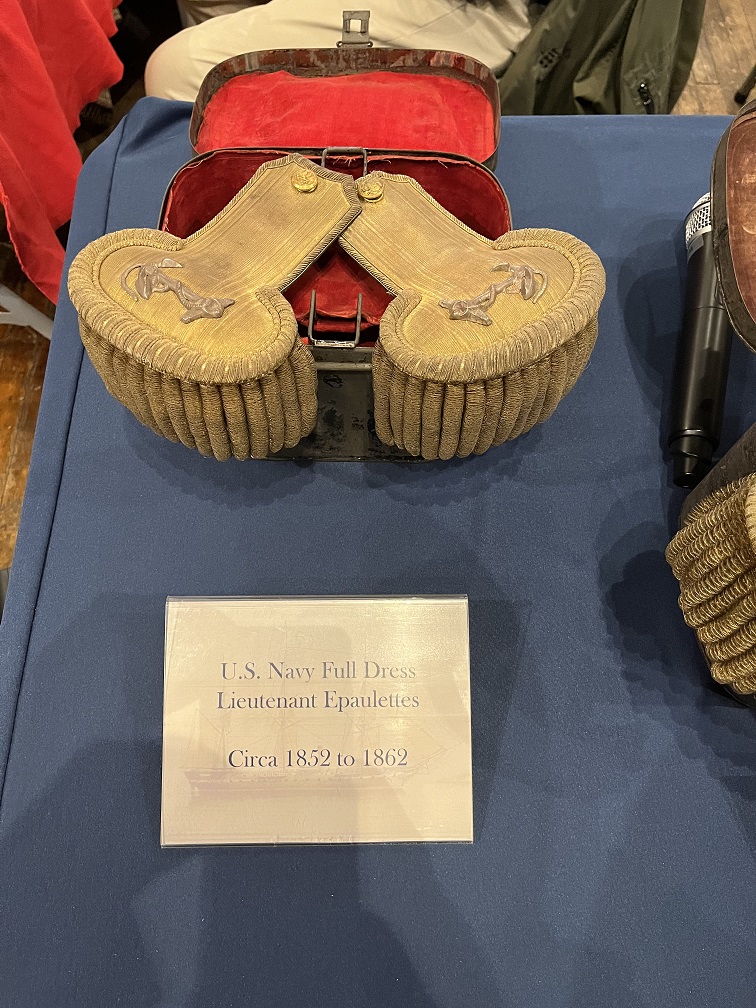
Although Jerry’s private collection is not open to the public, many of these pieces are on display at the annual South Boston Civil War Collectors Show held at the end of February in South Boston, and at other Civil War shows around the area. Jerry also has portions of his collection on display at the South Boston-Halifax County Museum of Fine Arts and History, depending on the exhibit. The best way to contact Jerry is through the museum at the information below.

South Boston – Halifax County Museum of Fine Arts and History
1540 Wilborn Ave
South Boston, Va. 24592
(434) 572-9200
http://www.sbhcmuseum.org/
Learn more about the author at https://ncvamedia.com/authors/john-theo-jr/
































































































